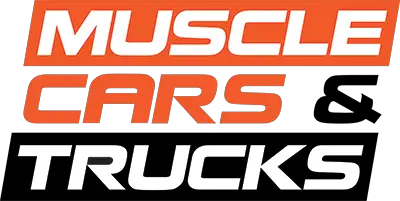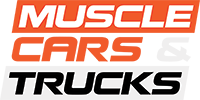This page is dedicated to the history, products, people, sales and future of the Dodge brand.
History Of The Dodge Brand
It may surprise people to learn that the Dodge brand is older than Ford Motor Company, General Motors. In fact, it’s the oldest continuing American marque in the entire automotive industry, with only the likes of France’s Renault and Peugeot, Italy’s Fiat, and Germany’s Mercedes-Benz being older. The name comes from the surname of John and Horace Dodge, and was originally called the “Dodge Brothers Company.”
Dodge was originally a parts supplier for other automobiles before entering into vehicle manufacturing in 1914 out of Hamtramck, Michigan. After the deaths of the Dodge brothers in 1920, the company was sold to New York investment bank Dillon, Read & Co. (now part of UBS) in 1925 before being sold to Chrysler in 1928. This wouldn’t be the first time the Dodge brand changed hands.
The first Dodge automobile was called the Dodge 30-35 Touring Car, and was considered to be a more upscale answer to the Ford Model T, while pioneering innovations such as an all-steel body, higher voltage electrical systems, a sliding-gear transmission, and more horsepower than what could be seen from Ford at the time. Infamously, John Dodge once said that “Someday, people who own a Ford are going to want an automobile,” sowing an early rivalry between the two Michigan automakers that continues to this day.
Today, Dodge is perhaps best known for its contributions to the muscle car segment, starting with the Coronet-based Super Bee, as well as the Challenger pony car, and iconic Charger. This muscle car ethos is what the Dodge brand has leveraged in its modern product portfolio.
Present Day
Dodge began to exit a decades-long malaise as it reintroduced the Charger nameplate onto a four-door sedan based on the Chrysler LX platform in 2005 as a 2006 model year vehicle. Other vehicles that demonstrated Dodge’s emphasis on performance included the radical Viper two-seat sports car, and the muscular Magnum station wagon. In 2009 the Challenger reappeared into the brand lineup as Chrysler Group exited bankruptcy, continuing the brand’s momentum towards a performance-focused brand.
In 2014 Dodge cemented its place in the modern muscle car era with the introduction of the 707 horsepower Hellcat V8 engine in the 2015 Challenger SRT. This supercharged pushrod Hemi V8 exceeded anything that Ford and Chevrolet were offering at the time in terms of horsepower – especially horsepower for the money, asking just over $60,000 USD for 700+ hp – and soon found itself in the 2015 Charger, creating the most powerful sedan in the world. Dodge continued to rollout evermore powerful variations of the Hellcat, apexing with the 840 horsepower Dodge Challenger SRT Demon, as well as the 797 horsepower “Redeye” variant. The cachet and halo effect of the Hellcat V8 engine, as well as the record-setting Demon, have since led to increased market share of the Dodge brand in the muscle car market, despite a shrinking of the segment.
As political mandates call for stricter and stricter emission regulations, the Dodge brand is tasked with surviving into the next decade with the controversial mission of creating electric and/or electrified vehicles for an audience that has grown accustomed to the cheap thrill of high-octane horsepower. This has led to a pivot in brand strategy, as evident by the economical Hornet SUV that’s on the way for the 2023 model year, as well as the all-electric Charger SRT Daytona Banshee concept that were revealed during Speed Week in August of 2022. It’s also expected that the beloved Hemi V8 engine family will be discontinued, as will the LX-platform Charger and Challenger. Their replacements will be based on the STLA Large Platform, per analyst forecasting, and will rely on more modern engines such as the new Hurricane inline-six turbo engine for propulsion. These new vehicles are expected to be built in Windsor, Ontario instead of Brampton, Ontario, where the outgoing muscle cars are built.

Dodge Muscle Cars
Dodge Charger
Dodge Challenger
Dodge Coronet
Dodge Dart
Dodge Magnum
Dodge Viper

Dodge Pickup Trucks
Dodge Ram
Dodge Rampage
Dodge Dakota
Dodge Power Wagon

Dodge Utility Vehicles
Dodge Ramcharger
Dodge Durango
Dodge Nitro
Dodge Hornet
Concept Vehicles
Dodge Tomahawk Concept
Dodge Charger Daytona SRT Banshee Concept
Dodge Hornet Concept

SRT Division
The SRT Division of Dodge was a performance engineering group that was tasked with making the mundane more menacing and fast cars even faster. At one point, SRT was being marketed as a separate brand from Dodge. More recently, however, the SRT group was disbanded and have since been integrated into other product programs. Product examples that continue the ethos of the SRT division include the Jeep Wrangler 392 as well as the Ram 1500 TRX. Other memorable examples of SRT products include:
Dodge Neon SRT-4
Dodge Caliber SRT-4
Dodge Charger SRT-8
Dodge Charger SRT Hellcat
Dodge Challenger SRT-8
Dodge Challenger SRT Hellcat
Dodge Durango SRT 392
Dodge Durango SRT Hellcat
Dodge Magnum SRT-8
Dodge Ram SRT-10
Chrysler Crossfire SRT-6
Jeep Grand Cherokee SRT-8
Hemi And Hellcat Engines
5.7L Eagle Hemi V8
6.2L Hellcat V8
6.2L Hellcat Redeye V8
6.2L Demon V8

Electric Vehicles
Based on the the FCA-PSA Groupe partnership to create Stellantis, the Dodge brand is tasked with introducing electric and electrified vehicles that can appeal to a customer base that’s used to high-octane muscle cars in various shapes and sizes. Upcoming Dodge electric vehicles will use variations of the STLA architecture, which consists of STLA Small, STLA Medium, STLA Large, and STLA Frame. The first example of what a Dodge EV could look like was revealed during Dodge Speed Week as the Charger Daytona SRT Daytona Banshee concept.
Dodge Sales
Coming soon.
Key People
Tim Kuniskis: CEO of Dodge

Future Products
Next-Generation Dodge Charger
Next-Generation Dodge Challenger
Next-Generation Dodge Durango
Dodge ‘Cuda




